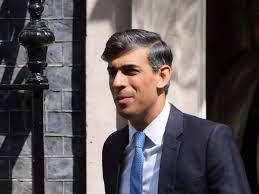 Uber Technologies Inc reported a record $5.2 billion loss and revenue that fell short of Wall Street targets on Thursday as growth in its core ride-hailing business slowed, sending its shares down 6%.
Uber Technologies Inc reported a record $5.2 billion loss and revenue that fell short of Wall Street targets on Thursday as growth in its core ride-hailing business slowed, sending its shares down 6%.
The company said a price war in the United States was easing and that an important measure of profitability topped its target, but slowing revenue growth raised questions about Uber’s ability to expand and fend off competition.
“Losses are widening and the competition is cut-throat,” said Haris Anwar, analyst at financial markets platform Investing.com. “What’s sapping investor confidence and hitting its stock hard after this report is the absence of a clear path to grow revenue and cut costs.”
Uber’s second-quarter net loss, widening from a loss of $878 million a year earlier, included $3.9 billion of stock-based compensation expenses related to its IPO earlier this year and nearly $300 million in “driver appreciation” related to the stock sale.
The report caught investors off guard in part because Uber’s smaller rival Lyft Inc on Wednesday had raised revenue expectations and described an easing price war.
Uber stock had risen more than 8% and Lyft had gained 3% during the day. Following Uber’s report, its shares fell 6% and Lyft dropped nearly 2%.
Uber reported that revenue growth slowed to 14% to $3.2 billion and fell short of the average analyst estimate of $3.36 billion, according to IBES data from Refinitiv. The company’s core business, ride-hailing, grew revenue only 2% to $2.3 billion. Food delivery Uber Eats grew 72% to $595 million.
Gross bookings, a measure of total value of car rides, scooter and bicycle trips, food deliveries and other services before payments to drivers, restaurants and other expenses, rose 31% from a year earlier to $15.76 billion. Analysts on average were expecting $15.80 billion.
At the same time, Uber is keeping less money per car ride. The amount passengers spent on trips rose 20% while the amount Uber kept after paying its drivers increased just 4%.
Chief Executive Officer Dara Khosrowshahi said in a press call the competitive environment was starting to rationalize and had been “progressively improving” since the first quarter.
This year would be the peak for investment and losses would lessen in 2020 and 2021, he said.
Lyft on Wednesday said pricing had become “more rational”, meaning the company should spend less on promotions and incentives to win market share. It raised its revenue outlook.
Both the companies have historically relied on subsidization to attract riders and have been spending heavily to expand services into areas such as self-driving technology for Lyft and food delivery for Uber.
Uber’s costs rose 147% to $8.65 billion in the quarter, including a sharp rise in spending for research and development.
“While we will continue to invest aggressively in growth, we also want it to be healthy growth, and this quarter we made good progress in that direction,” Chief Financial Officer Nelson Chai said in a statement.
The adjusted loss before items including interest, tax, and stock-based compensation more than doubled to $656 million but was better than the company expected, Uber said. It also topped Wall Street targets of a $996 million loss.
Gross bookings for the year would be $65 billion to $67 billion, it said, in line with Wall Street’s target of $65.9 billion.
The company, which has not yet made clear whether it will make a profit, is trying to convince investors that growth will come not only from its ride services, but also from other logistics and food delivery services.
Uber said its monthly active users rose to 99 million globally, from 93 million at the end of the first quarter and 76 million a year earlier.












